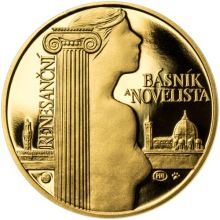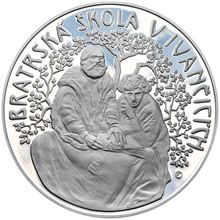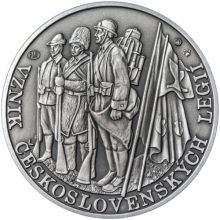Monetary reform of 1953
HISTORY OF CZECHOSLOVAK CURRENCY.
For the consistent creation of "socialist" finance and for the transition to the management of monetary development in the system of directive central planning, it proved necessary to get rid of the "ballast" of the unstable monetary situation as it was formed after the monetary reform in November 1945. The new system of "money management" wanted to start with a clean, unencumbered monetary situation. It was decided to carry out the monetary reform on June 1, 1953. It was prepared in a very short time by a narrow working group and built on the following foundations:
- Currency from 1945 and subsequent years was exchanged for new ones in the amount of CZK 52.1 billion in a strongly reduced ratio, to CZK 1.4 billion. Citizens who did not employ any labor force were exchanged CZK 300 of old money per person in a ratio of 5: 1, their other cash and all cash of citizens who employed someone changed in a ratio of 50: 1.
- The funds that were on blocked (tied) deposits from the monetary reform in 1945 in the amount of CZK 80 billion were canceled.
- Wages and incomes of farmers for supplies, social benefits and pensions, etc. were reimbursed in a ratio of 5: 1.
- The gold content of the koruna was set at 0.123426 g of gold. The ratio of the koruna to foreign currencies, such as CZK 7.20 to the US dollar, was determined accordingly. It was a completely inadequate solution. The old exchange rate of CZK 50 / USD would correspond in real terms to the new exchange rate of CZK 10 / USD. At the end of 1954, Czechoslovakia ceased to be a member of the International Monetary Fund and the World Bank.
- Currency from 1945 and subsequent years was exchanged for new ones in the amount of CZK 52.1 billion in a strongly reduced ratio, to CZK 1.4 billion. Citizens who did not employ any labor force were exchanged CZK 300 of old money per person in a ratio of 5: 1, their other cash and all cash of citizens who employed someone changed in a ratio of 50: 1.
- The funds that were on blocked (tied) deposits from the monetary reform in 1945 in the amount of CZK 80 billion were canceled.
- Wages and incomes of farmers for supplies, social benefits and pensions, etc. were reimbursed in a ratio of 5: 1.
- The gold content of the koruna was set at 0.123426 g of gold. The ratio of the koruna to foreign currencies, such as CZK 7.20 to the US dollar, was determined accordingly. It was a completely inadequate solution. The old exchange rate of CZK 50 / USD would correspond in real terms to the new exchange rate of CZK 10 / USD. At the end of 1954, Czechoslovakia ceased to be a member of the International Monetary Fund and the World Bank.
CONTENT
- Origin of the Czechoslovak currency.
- Monetary stabilization.
- Establishment of the central bank.
- National Bank of Czechoslovakia.
- Gold reserve.
- Economic boom.
- Depression.
- The main activities of banks.
- Development of the national economy.
- Art designs.
- Czech banking system.
- The disintegration of Czechoslovakia.
- German occupation of the Czech lands.
- Currency damage caused by the occupation.
- Preparation of post-war monetary policy.
- Inflation and monetary chaos.
- Organization of monetary relations.
- Socialization of finance.
- February 1948 and central management.
- Directive management of monetary relations.
- Monetary reform of 1953.
- Central plan.
- Isolation.
- Reform efforts.
- "Standardization".
- Economic problems.
- Economic transformation.
- Changes in monetary policy management.
- Development of the koruna exchange rate.
- Development of the banking system.
- Development in 1990-1992.
- Division of the Czechoslovak Socialist Republic.
- Origin of the Czech koruna.
- Monetary policy management.
- International cooperation.
- Monetary stabilization.
- Establishment of the central bank.
- National Bank of Czechoslovakia.
- Gold reserve.
- Economic boom.
- Depression.
- The main activities of banks.
- Development of the national economy.
- Art designs.
- Czech banking system.
- The disintegration of Czechoslovakia.
- German occupation of the Czech lands.
- Currency damage caused by the occupation.
- Preparation of post-war monetary policy.
- Inflation and monetary chaos.
- Organization of monetary relations.
- Socialization of finance.
- February 1948 and central management.
- Directive management of monetary relations.
- Monetary reform of 1953.
- Central plan.
- Isolation.
- Reform efforts.
- "Standardization".
- Economic problems.
- Economic transformation.
- Changes in monetary policy management.
- Development of the koruna exchange rate.
- Development of the banking system.
- Development in 1990-1992.
- Division of the Czechoslovak Socialist Republic.
- Origin of the Czech koruna.
- Monetary policy management.
- International cooperation.
JÁ  ZLATÉ MEDAILE.CZ
ZLATÉ MEDAILE.CZ


